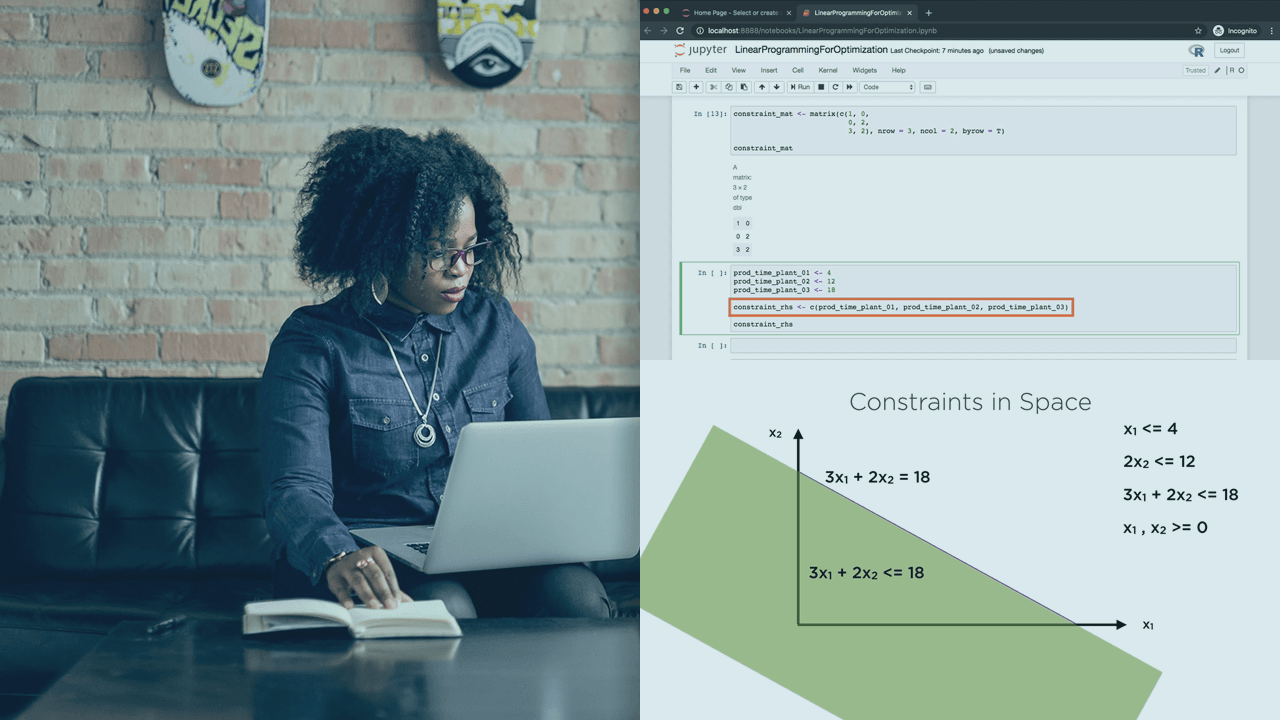
Description
Explore graphs of equations, exponents, counting problems, and more, emphasizing intuition and understanding over just finding an answer.
This course will deepen your knowledge of basic algebra and introduce you to some surprisingly useful applications of this powerful mathematical tool.
Some prior experience with algebra is assumed, but you're in good shape to start this course if you can plot points on a coordinate plane and use a variable to describe the relationship between the side length of a square and its area.
By the end of this course, you’ll have extended your problem solving skills and be more aware of what common misconceptions can happen in algebra problems. You'll have enough background to go on to our Algebra II course.
Tags
Syllabus
- Equations and Unknowns: Sometimes x is unknown, and sometimes it's unknowable.
- Balancing Scales: Develop intuition for equation solving strategies by solving balance puzzles.
- Elimination: Simplify systems of equations by combining them.
- Substitution: First, isolate a shape on one side of a scale, then use this equivalency to make substitutions elsewhere.
- Linear Equations: Explore the equations that make straight lines.
- Graphing Rates: Explore lines to see how they relate to steady change.
- Equations of Lines: Learn different ways of representing lines with equations.
- Special Lines: Discover two special types of relationships between lines.
- Linear Systems: Multiple equations, multiple lines.
- From Scales to Graphs: Explore graphing linear systems on the coordinate plane.
- Number of Solutions: See what determines how many solutions a linear system can have.
- Problem Solving: Stretch your understanding of linear systems with these challenging problems.
- Exponents and Radicals: Understand and apply powers and roots.
- Exponent Properties: Build powers from multiplication, and then merge powers together.
- Powers of Products and Powers: See how we can break apart powers of some expressions.
- Zero and Negative Exponents: What does it mean to raise a number to a zero or negative power?
- Fractional Exponents and Radicals: How are exponents and radicals related?
- Problem Solving: Put your exponent reasoning and skills to the test.
- Sequences: The algebra of numerical patterns.
- Patterns: Explore, describe, and predict the patterns.
- Describing Sequences: Use algebra to describe numerical patterns.
- Arithmetic Sequences: Focus on sequences built on addition.
- Geometric Sequences: Investigate patterns with repeated multiplication.

-
TypeOnline Courses
-
ProviderBrilliant
This course will deepen your knowledge of basic algebra and introduce you to some surprisingly useful applications of this powerful mathematical tool.
Some prior experience with algebra is assumed, but you're in good shape to start this course if you can plot points on a coordinate plane and use a variable to describe the relationship between the side length of a square and its area.
By the end of this course, you’ll have extended your problem solving skills and be more aware of what common misconceptions can happen in algebra problems. You'll have enough background to go on to our Algebra II course.
- Equations and Unknowns: Sometimes x is unknown, and sometimes it's unknowable.
- Balancing Scales: Develop intuition for equation solving strategies by solving balance puzzles.
- Elimination: Simplify systems of equations by combining them.
- Substitution: First, isolate a shape on one side of a scale, then use this equivalency to make substitutions elsewhere.
- Linear Equations: Explore the equations that make straight lines.
- Graphing Rates: Explore lines to see how they relate to steady change.
- Equations of Lines: Learn different ways of representing lines with equations.
- Special Lines: Discover two special types of relationships between lines.
- Linear Systems: Multiple equations, multiple lines.
- From Scales to Graphs: Explore graphing linear systems on the coordinate plane.
- Number of Solutions: See what determines how many solutions a linear system can have.
- Problem Solving: Stretch your understanding of linear systems with these challenging problems.
- Exponents and Radicals: Understand and apply powers and roots.
- Exponent Properties: Build powers from multiplication, and then merge powers together.
- Powers of Products and Powers: See how we can break apart powers of some expressions.
- Zero and Negative Exponents: What does it mean to raise a number to a zero or negative power?
- Fractional Exponents and Radicals: How are exponents and radicals related?
- Problem Solving: Put your exponent reasoning and skills to the test.
- Sequences: The algebra of numerical patterns.
- Patterns: Explore, describe, and predict the patterns.
- Describing Sequences: Use algebra to describe numerical patterns.
- Arithmetic Sequences: Focus on sequences built on addition.
- Geometric Sequences: Investigate patterns with repeated multiplication.
Tags
Related Courses


Applied Calculus with Python

Real Analysis II

Fundamentals of Engineering Exam Review

Revisión de Aritmética

Initiez-vous à la statistique inférentielle

Statistics Foundations: Advanced Topics

Geometry II

EQAO Grade 3 Math: Test Prep & Practice

Solving Problems with Numerical Methods

Advanced Predictive Modelling in R Certification Training


 Online Courses
Online Courses  Brilliant
Brilliant
